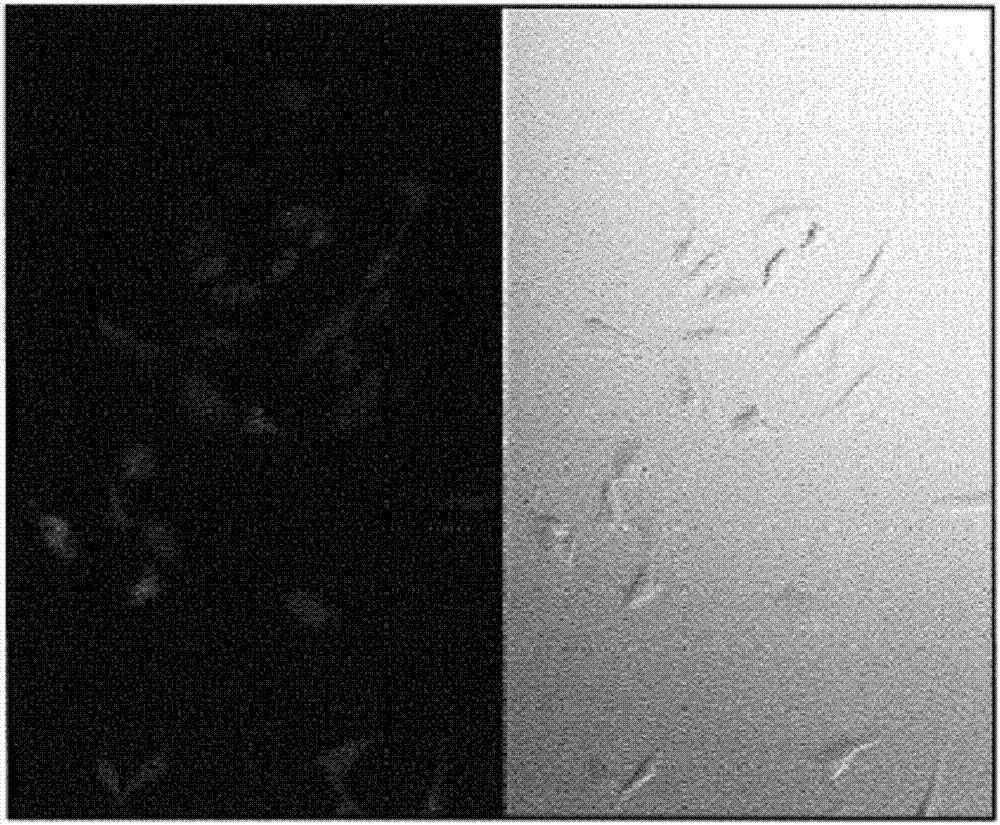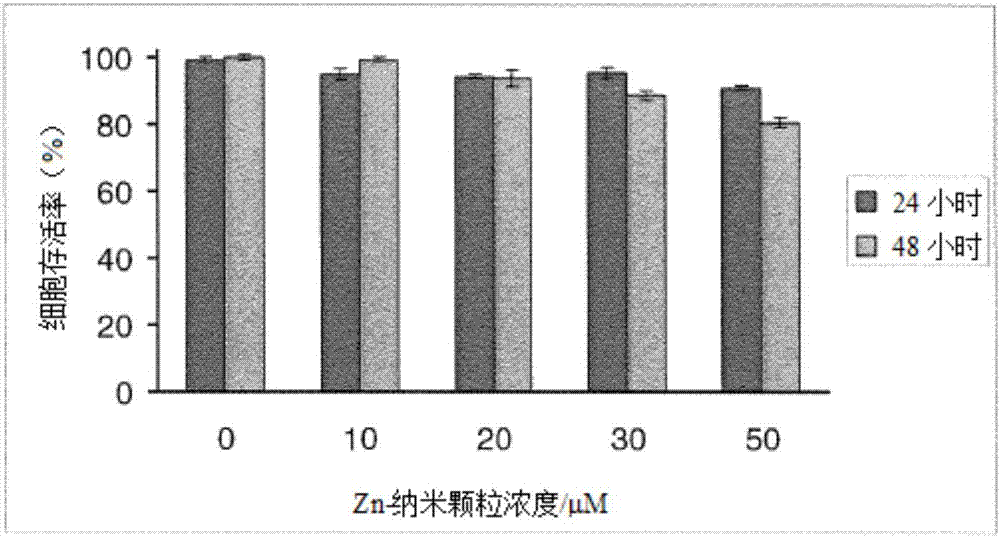Targeting intracellular copper ions for inhibiting angiogenesis using nanoparticles of ternary inorganic metal sulfide m1m2s4 (m1, independently, is mg, ca, mn, fe, or zn; m2=mo or w) compounds to treat metastatic cancer
A nanoparticle, independent technology, applied in the field of new covalent network ternary inorganic metal sulfides, which can solve the problem of increased side effects of copper
- Summary
- Abstract
- Description
- Claims
- Application Information
AI Technical Summary
Problems solved by technology
Method used
Image
Examples
preparation example Construction
[0029] The preparation of nanoparticles of the present invention can be carried out in the following manner.
[0030] A main objective of the present invention is to provide novel nanoparticles suitable for intracellular depletion of copper to inhibit angiogenesis. A typical preparation can be carried out as follows: about 0.1 mL to about 300 mL, ideally about 1 mL to about 100 mL, preferably about 25 mL, of 1 to about 50 total carbon atoms, ideally 1 to about 12 carbon atoms Mercapto alkylacid, preferably 3-mercaptopropionic, is added to about 1 mL to about 200 mL, ideally about 2 mL to about 100 mL, preferably 10 mL of about 0.01 N to about 18 N, ideally 0.1 N to about 10N, preferably 1N NH 4 in OH solution. Other suitable hydroxides include NaOH, KOH, Ca(OH) 2 or Na 2 CO 3 . Then an effective amount of M 1 Salt is added to the water. Applicable M 1 Salts include zinc acetate, zinc chloride, zinc sulfate, zinc perchlorate, zinc nitrate, and non-zinc salts such as ma...
Embodiment 1
[0041] Cell viability assays were performed using the MTT method. HuVEC cells were seeded in 96-well plates at a density of 1×10 per well 4 cells in a well containing endothelial cell basal growth medium-2 (EBM-2) containing 10% FBS (fetal bovine serum) and 1% penicillin-streptomycin, at 37°C, 5% CO 2 and 95% air for 5 hours to attach to the surface. Cells in each well were then incubated with 100 μL of fresh medium containing various concentrations of nanoparticles for 24 h and 48 h. Control wells contained the same medium but no nanoparticles. Each concentration was tested in triplicate. At the end of the above incubation period, 10 μL of 5 mg / mL 3-(4,5-dimethylthiazol-2)-2,5-diphenyltetrazolium bromide (3-(4,5-dimethylthiazol-2 -yl)-2,5-diphenyltetrazolium bromide (MTT)) was added to each well and incubated for an additional 3 hours. Then, 100 μL of detergent was added to each well and incubation was continued for an additional 4 hours at 37°C. Finally, the absorbance...
Embodiment 2
[0044] m 1 MoS 4 and M 1 m 2 S 4 (M 1 independently Mg, Ca, Mn or Fe; M 2 Mo or W) compounds prevent endothelial cell tube formation in an in vitro model of angiogenesis. All of these compounds were able to reduce the copper concentration in the endothelial cells used in this model study as well as the copper concentration in the culture medium via ion exchange with divalent ions in the ternary compound by the following reactions:
[0045] Cu n+ (n=1 or 2)+M 1 m 2 S 4 → CuM 2 S 4 +M 1 2+ .
[0046] Angiogenesis is inhibited because copper is a required cofactor for many angiogenic factors (including VEGF, bFGF, angiopoietin) during tube formation in endothelial cells.
[0047] Other tests are performed as follows:
[0048] The tube formation assay is an in vitro model of angiogenesis commonly used to measure the ability of endothelial cells to form "tubes," ie, three-dimensional structures resembling blood vessel walls. Tube formation experiments were performe...
PUM
| Property | Measurement | Unit |
|---|---|---|
| diameter | aaaaa | aaaaa |
| size | aaaaa | aaaaa |
Abstract
Description
Claims
Application Information
 Login to View More
Login to View More - R&D
- Intellectual Property
- Life Sciences
- Materials
- Tech Scout
- Unparalleled Data Quality
- Higher Quality Content
- 60% Fewer Hallucinations
Browse by: Latest US Patents, China's latest patents, Technical Efficacy Thesaurus, Application Domain, Technology Topic, Popular Technical Reports.
© 2025 PatSnap. All rights reserved.Legal|Privacy policy|Modern Slavery Act Transparency Statement|Sitemap|About US| Contact US: help@patsnap.com



